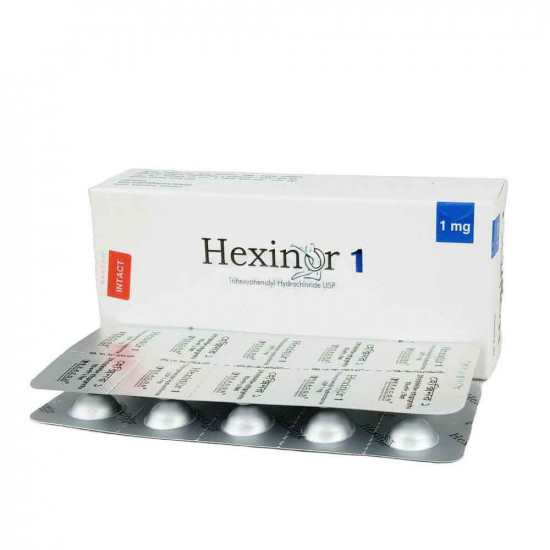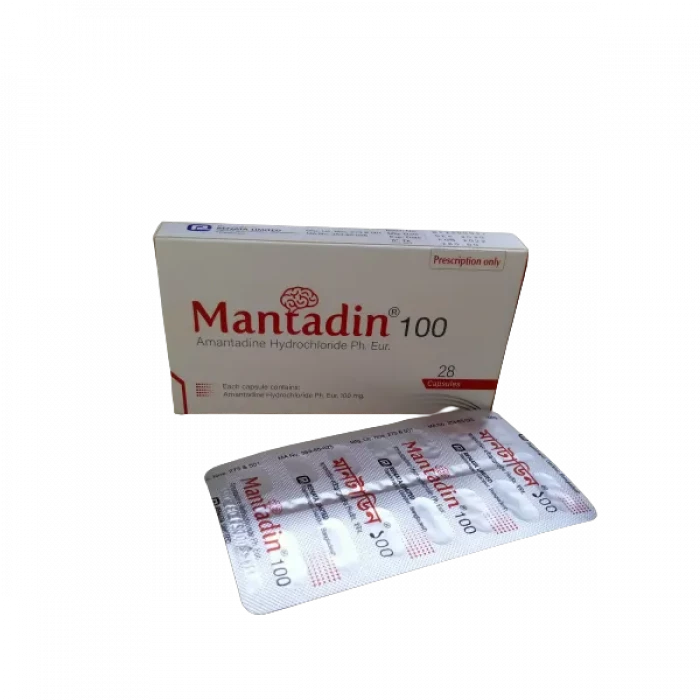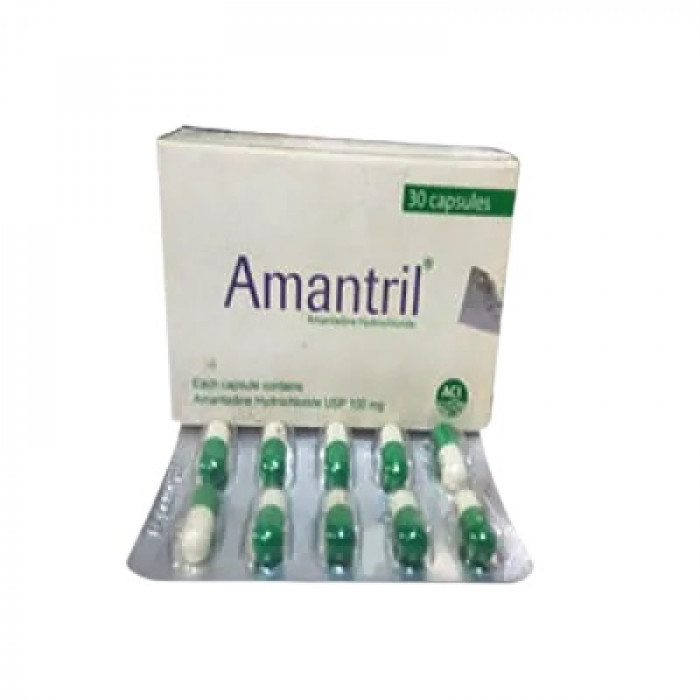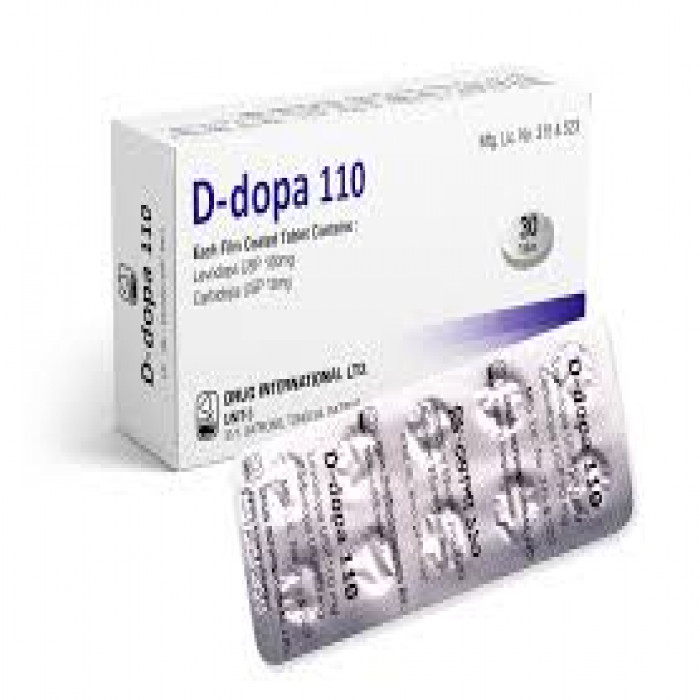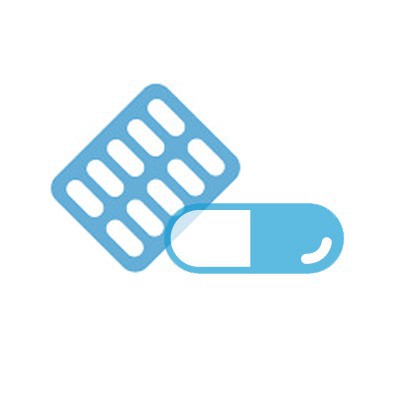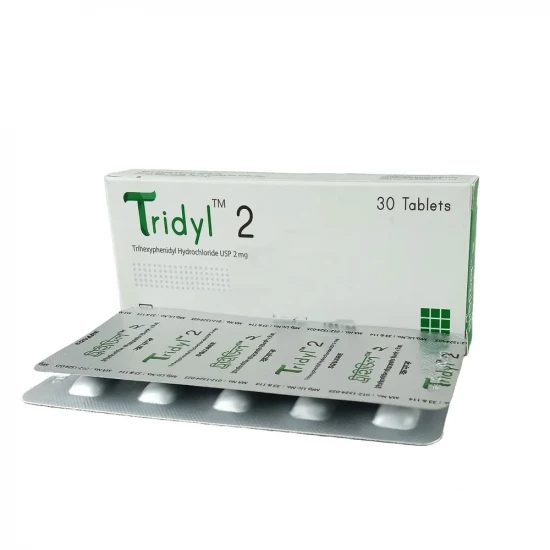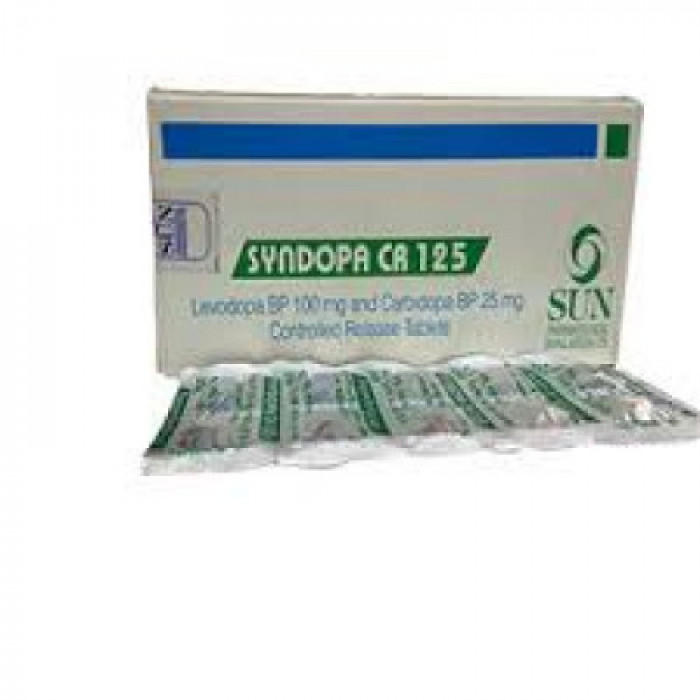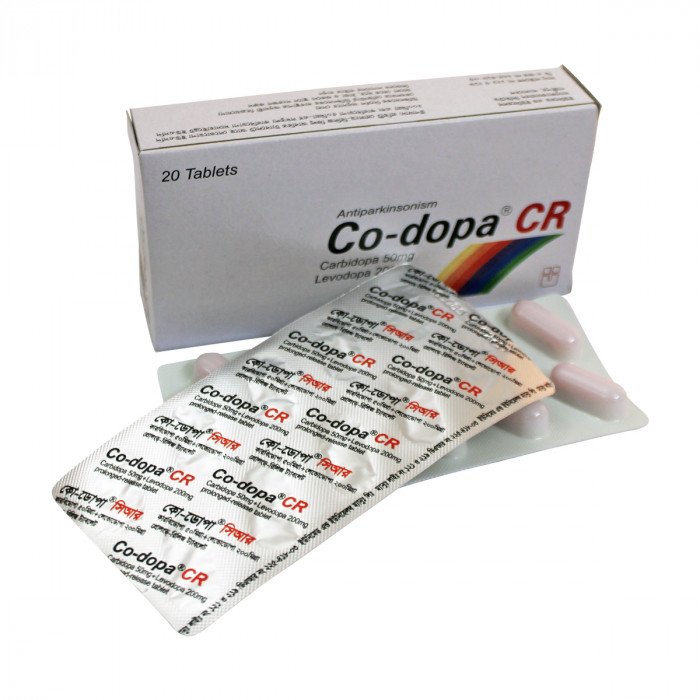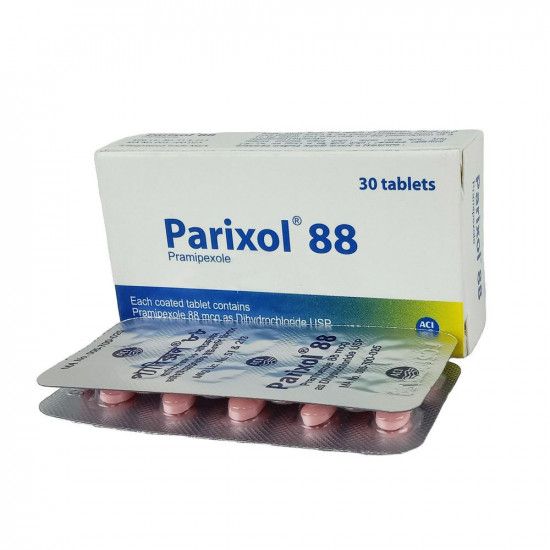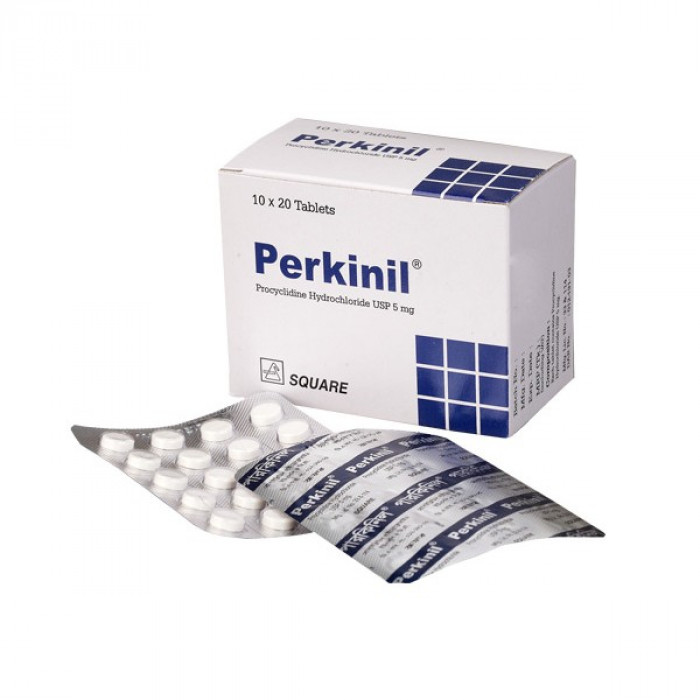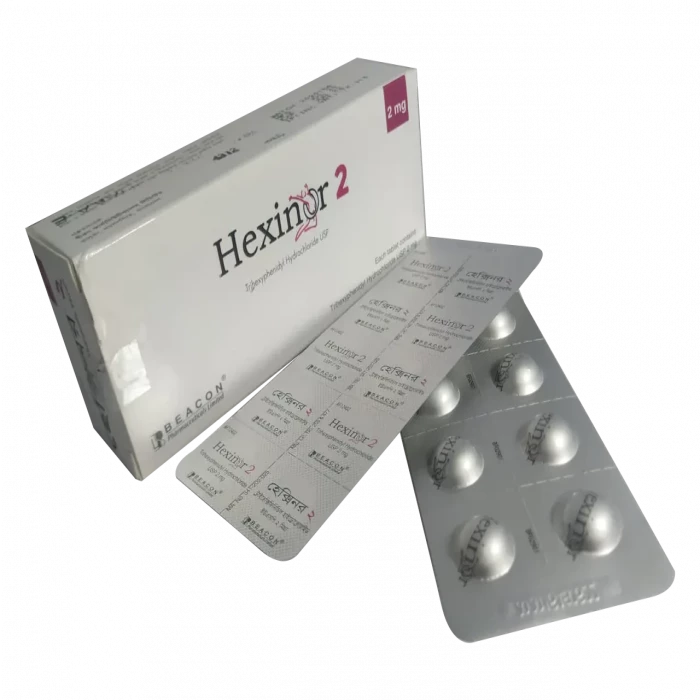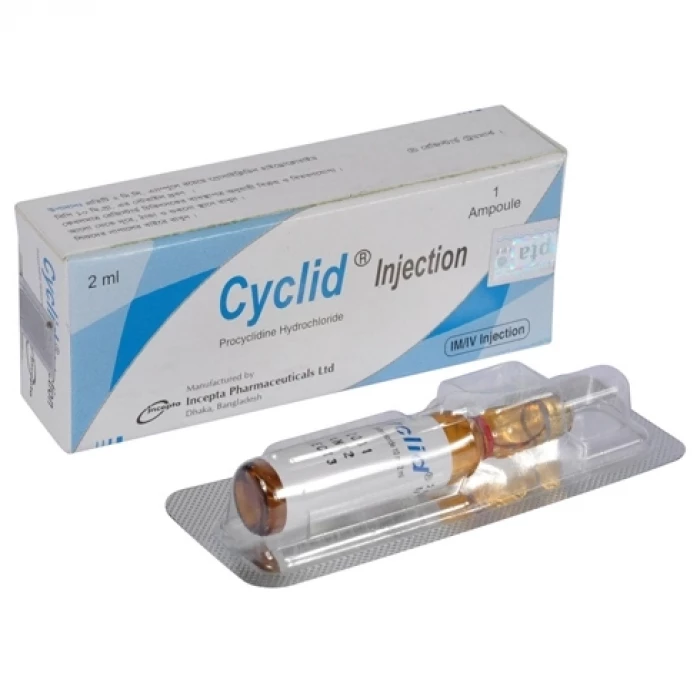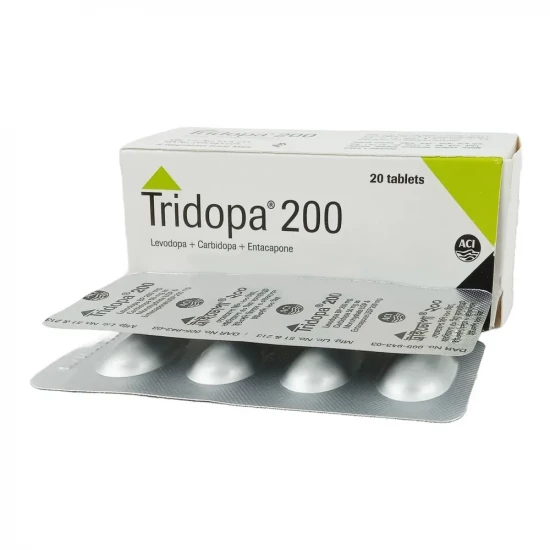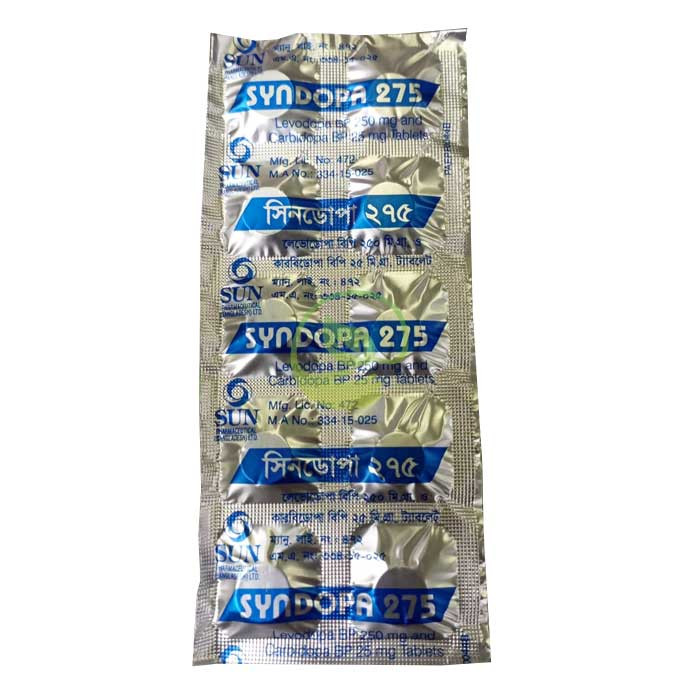

✔ 100% Authentic Product
👁️ Currently Viewing 3745
Syndopa 275mg 10pcs
Tablet. Generic Name:Levodopa 250mg + carbidopa 25mg/tablet Manufacturer/Distributor: Sun Pharma
Discount
Price: ৳ 95
MRP:
৳
100.3
5%
Off

100% Genuine Products, Guaranteed

Safe & Secure Payments, Always

Fast, Secure & Efficient Delivery

Proper Packaging
 Cash on Delivery - All over Bangladesh
Cash on Delivery - All over Bangladesh Regular Delivery - 12-24 Hours, Dhaka City* Charge Tk.39-59
Regular Delivery - 12-24 Hours, Dhaka City* Charge Tk.39-59 Regular Delivery - 24-48 Hours, Other Cities* Charge Tk.99-110
Regular Delivery - 24-48 Hours, Other Cities* Charge Tk.99-110
 ফ্রি ডেলিভারিঃ - ৯৯৯ টাকা+ অর্ডারে, ঢাকা
শহরে
ফ্রি ডেলিভারিঃ - ৯৯৯ টাকা+ অর্ডারে, ঢাকা
শহরে ফ্রি ডেলিভারিঃ - ২৯৯৯ টাকা+ অর্ডারে, ঢাকার
বাহিরে
ফ্রি ডেলিভারিঃ - ২৯৯৯ টাকা+ অর্ডারে, ঢাকার
বাহিরে
100% Genuine Products, Guaranteed
Safe & Secure Payments, Always
Fast, Secure & Efficient Delivery
Proper Packaging
 Cash on Delivery - All over Bangladesh
Cash on Delivery - All over Bangladesh Regular Delivery - 12-24 Hours, Dhaka City* Charge Tk.39-59
Regular Delivery - 12-24 Hours, Dhaka City* Charge Tk.39-59 Regular Delivery - 24-48 Hours, Other Cities* Charge Tk.99-110
Regular Delivery - 24-48 Hours, Other Cities* Charge Tk.99-110 ফ্রি ডেলিভারিঃ - ৯৯৯ টাকা+ অর্ডারে, ঢাকা
শহরে
ফ্রি ডেলিভারিঃ - ৯৯৯ টাকা+ অর্ডারে, ঢাকা
শহরে ফ্রি ডেলিভারিঃ - ২৯৯৯ টাকা+ অর্ডারে, ঢাকার
বাহিরে
ফ্রি ডেলিভারিঃ - ২৯৯৯ টাকা+ অর্ডারে, ঢাকার
বাহিরে
✅ Description:
Indications
This pill is used to treat Parkinson's disease and Parkinson's syndrome. It helps to alleviate many of the symptoms of Parkinson's disease, especially rigidity, and bradykinesia. Tremor, dysphagia, sialorrhea, and postural instability are common symptoms of Parkinson's disease and syndrome, and this pill can assist. Before physiotherapy, levodopa with carbidopa improves motor recovery after a stroke.
Pharmacology
The metabolic precursor of dopamine, levodopa, penetrates the blood-brain barrier and is transformed into the neurotransmitter dopamine in the brain. Carbidopa is a dopa decarboxylase (DDC) inhibitor that slows the conversion of Levodopa to dopamine in the peripheral nervous system, allowing more Levodopa to reach the brain.
Dosage & Administration
If 100/10 mg tablet is used: Dosage may be initiated with one tablet three or four times a day. Titration upward may be required in some patients to achieve the optimum dosage of carbidopa. The dosage may be increased by one tablet every day or every other day until a total of eight tablets (two tablets q.d.s.) is reached.
For patients starting with 250/25 mg tablet: The initial dose is one-half taken once or twice daily. However, this may not provide the optimal amount of Carbidopa needed by many patients. If necessary, add one-half every day or every other day until optimal response is reached. The suggested starting dosage for most patients taking more than 1500 mg of Levodopa a day is one tablet of 250/25 mg three or four times a day.
Maintenance dose: Therapy should be individualized and adjusted according to the desired therapeutic response. When more levodopa is required, 250/25 mg tablets should be substituted at a dosage of one tablet three or four times a day. If necessary, the dosage of 250/25 mg tablets may be increased by half to one tablet every other day to a maximum of eight tablets a day. Experience with a total daily dosage greater than 200 mg of Carbidopa is limited.
Interactions
When Carbidopa-Levodopa is introduced to the treatment of a patient on antihypertensive medications, symptomatic postural hypotension occurs. As a result, when CarbidopaLevodopa therapy begins, the antihypertensive medication dose may need to be adjusted. There have been a few reports of side effects from using tricyclic antidepressants and Carbidopa-Levodopa together, including hypertension and dyskinesia. Carbidopa and/or Levodopa bioavailability is reduced when combined with iron sulfate or ferrous gluconate, according to studies. Isoniazid and dopamine-2 receptor antagonists (e.g., phenothiazines, butyrophenones, and risperidone) may decrease Levodopa's therapeutic benefits. Furthermore, phenytoin and papaverine have been shown to counteract the positive benefits of Levodopa in Parkinson's disease. Patients using these medications in combination with Carbidopa-Levodopa should be monitored closely for signs of therapeutic response loss. Selegiline and Carbidopa-Levodopa treatment together may cause severe orthostatic hypotension that is not caused by Carbidopa-Levodopa alone.
Contraindications
Patients with hypersensitivity to Carbidopa and Levodopa, as well as those with narrow-angle glaucoma, should avoid using the Carbidopa-Levodopa pill. Carbidopa-Levodopa should not be taken in people with suspected unexplained skin lesions or a history of melanoma because Levodopa can trigger a malignant melanoma.
Side Effects
The central neuropharmacology action of dopamine causes side effects that are common in individuals taking Carbidopa-Levodopa. The effects of these events are generally lessened when the dose is reduced. Dyskinesias, such as choreiform, dystonic, and other involuntary movements, and nausea are the most prevalent side effects.
Body as a whole: syncope, chest pain, anorexia.
Cardiovascular: palpitation, orthostatic effects including hypotensive episodes, hypertension, phlebitis.
Gastrointestinal: vomiting, gastrointestinal bleeding, development of a duodenal ulcer, diarrhea, dark saliva.
Haemotologic: leukopenia, hemolytic and non-hemolytic anemia, thrombocytopenia, agranulocytosis.
Hypersensitivity: angioedema, urticaria, pruritus, Henoch-Schonlein purpura.
Nervous System: dizziness, somnolence, paresthesia, delusions, hallucinations, paranoid ideation, depression with or without the development of suicidal tendencies, dementia, dream abnormalities, agitation, confusion, and increased libido.
Respiratory: dyspnea.
Skin: alopecia, rash, dark sweat.
Urogenital: dark urine.
Pregnancy & Lactation
Even though the effects of CarbidopaLevodopa on human pregnancy are unclear, Levodopa and combinations of Carbidopa and Levodopa have been shown to induce visceral and skeletal abnormalities in rabbits. As a result, when CarbidopaLevodopa is used in women of reproductive age, the potential advantages of the medication must be balanced against the risks of pregnancy. Carbidopa is not known to be excreted in human milk. Because many medications are excreted in human milk and there is a risk of significant adverse reactions in babies, a choice should be taken whether to stop nursing or stop taking Carbidopa-Levodopa, taking into consideration the significance of maintaining a healthy lifestyle.
Precautions & Warnings
Medicine-induced extrapyramidal responses should not be treated with carbidopa-levodopa. Patients who are currently taking Levodopa alone may be administered Carbidopa-Levodopa; however, the Levodopa must be stopped at least 12 hours before starting Carbidopa-Levodopa. Because Carbidopa allows more Levodopa to enter the brain and hence more dopamine to be produced, dyskinesias may arise in individuals previously treated with Levodopa alone. If dyskinesias occur, the dose may need to be reduced. All patients should be closely monitored for the development of depression and suicidal ideation. Patients who have had or are now experiencing psychoses should be handled with caution. Patients with severe cardiovascular or pulmonary illness, bronchial asthma, renal, hepatic, or endocrine disease, or a history of peptic ulcer disease or convulsions should use carbidopa-levodopa with caution.
Patients with a history of myocardial infarction who exhibit atriai, nodal, or ventricular arrhythmia should be treated with caution. During the first dose administration and titration phase in such individuals, cardiac function should be closely monitored. Carbidopa-Levodopa may be used cautiously in patients with chronic wide-angle glaucoma if the intraocular pressure is well managed and the patient is closely monitored for changes in intraocular pressure
Storage Conditions
Store in a cool and dry place, protected from light.
✔️ SIDE EFFECTS OF SYNDOPA TABLET
Most side effects do not require any medical attention and disappear as your body adjusts to the medicine. Consult your doctor if they persist or if you’re worried about them
Common side effects of Syndopa
- Nausea
- Vomiting
- Dryness in mouth
- Constipation
- Dizziness
- Sleepiness
- Headache
- Abnormal dreams
- Anxiety
- Insomnia (difficulty in sleeping)
- Abnormality of voluntary movements
- Orthostatic hypotension (sudden lowering of blood pressure on standing)
✔️ USE SYNDOPA TABLET
Take this medicine in the dose and duration as advised by your doctor. Swallow it as a whole. Do not chew, crush or break it. Syndopa 275 Tablet is to be taken empty stomach.
Avoid Syndopa 275 Tablet with high protein meals such as cottage cheese, Swiss cheese, protein powder, eggs and milk.
⚠️Disclaimer:
At ePharma, we’re committed to providing accurate and accessible health information. However, all content is intended for informational purposes only and should not replace medical advice from a qualified physician. Please consult your healthcare provider for personalized guidance. We aim to support, not substitute, the doctor-patient relationship.







